Rebounders burn up to 50% more calories than treadmills because they create powerful G-force variations that amplify your metabolic demand. NASA research confirms rebounding is 68% more efficient for oxygen uptake, meaning you’ll achieve better results in less time. The full-body muscle engagement, combined with the low-impact nature, allows you to work out longer with less perceived effort. The science behind this calorie-burning phenomenon reveals why fitness experts increasingly recommend this revolutionary exercise method.
Why Rebounders Burn More Calories Than Treadmills

When it comes to maximizing calorie burn during exercise, rebounders consistently outperform treadmills for several compelling reasons.
Research from the International Journal of Sports Science confirms that rebounding burns approximately 50% more calories than treadmill running.
A 140 lb person can burn around 405 calories during a 40-minute rebounding session, compared to fewer calories during equivalent treadmill exercise.
The science behind this efficiency lies in the unique mechanics of rebounding—particularly the elevated G-forces that make your body feel up to three times heavier at the bottom of each bounce.
This increased gravitational load forces your muscles to work harder with every movement.
NASA research has demonstrated that rebounding is 68% more efficient than treadmill running for cardiovascular conditioning.
Comparative testing shows rebounding burns 234 calories in 30 minutes versus 218 calories while running, making it the superior choice for efficient calorie expenditure.
The NASA Oxygen Uptake Study: 68% More Efficiency
NASA’s groundbreaking Oxygen Uptake Study revealed rebounders deliver 68% more exercise efficiency than treadmills, creating a metabolic advantage validated by space science.
You’ll experience a “G-force calorie explosion” as your body responds to gravitational changes during bouncing, burning more calories with less perceived effort. A comparison study showed that 10 minutes of bouncing burns more calories than 30 minutes of running.
This discovery has shaped astronaut training protocols, providing a scientific foundation for why rebounding remains superior for maximizing caloric burn in minimal time.
Space-Validated Metabolic Advantage
Among the most compelling evidence supporting rebounders’ superiority is a groundbreaking NASA study that revealed remarkable metabolic advantages over traditional treadmill exercise.
When you bounce on a rebounder, you’re leveraging a space-validated phenomenon: your body consumes oxygen up to 68% more efficiently than while running on a treadmill at comparable heart rates. This means you’re getting more exercise benefit while using fewer metabolic resources.
The science behind this advantage lies in vertical acceleration patterns. At G-force levels below 4 (typical rebounders generate about 3.5Gs), your body achieves higher external work output with equivalent oxygen uptake. This advantage contributes to the low-impact nature of rebounding, which significantly reduces strain on joints compared to running.
Unlike treadmill running, which shows reduced metabolic rates in microgravity, rebounding maintains high efficiency regardless of gravitational conditions—making it not just Earth-effective but space-proven.
G-Force Calorie Explosion
The revolutionary finding that rebounders deliver 68% greater metabolic efficiency stems directly from the unique G-force conditions they create.
When you jump on a rebounder, you experience dramatic shifts in G-force that trigger amplified muscle recruitment and energy system activation.
NASA’s oxygen uptake measurements confirm that these increased G-forces stimulate superior caloric expenditure compared to steady-state treadmill exercise. Similar to Ray Cronise’s discovery that cold exposure techniques can significantly increase metabolic rate, your body responds to the mechanical stress by intensifying muscle contractions, increasing heart rate, and elevating respiration to meet oxygen demands.
Unlike a treadmill’s consistent motion, your rebounder workout creates variable impact forces during each bounce.
This intermittent high-G loading phase forces your cardiovascular system and muscles to work harder, accelerating fat oxidation and dramatically increasing your calorie burn potential with each session.
Astronaut Training Protocol
Revolutionary findings from the landmark NASA Oxygen Uptake Study established rebounding as 68% more efficient than treadmill running—a discovery that transformed astronaut training protocols forever.
The research demonstrated that you’ll achieve greater biomechanical stimuli on trampolines while maintaining similar heart rates and oxygen consumption as running.
When G-forces stay below 4-G’s, your body processes oxygen twice as efficiently on a rebounder compared to a treadmill. This became essential for astronauts, as simulated microgravity running reduces maximum metabolic rates by 20% compared to Earth-normal exercise.
NASA developed these trampoline protocols specifically to counteract the limited cardiovascular benefits of exercising in space. The study measured G-force using accelerometers at multiple body points to ensure safety and effectiveness.
The controlled biomechanics of rebounding create the perfect balance of metabolic efficiency without harsh impact—exactly what astronauts need for extended missions.
G-Force Multiplication: How Rebounding Increases Metabolic Demand
When you bounce on a rebounder, your body experiences a fascinating phenomenon that treadmills simply can’t replicate. At the bottom of each bounce, you’re subjected to 2-3 times normal gravitational force, creating a unique cellular stimulus.
The rebounder’s magic moment: that split-second at full compression where cellular awakening occurs through multiplied gravitational forces.
This G-force multiplication affects every cell in your body, enhancing cellular function through mechanical stimulation. Your cells experience alternating pressure and near-weightlessness, which promotes improved nutrient absorption and waste removal through the lymphatic system. This process essentially provides a cellular massage to the entire body during each of the approximately 100 bounces per minute.
Unlike treadmill running’s steady gravity, rebounding combines acceleration and deceleration forces that increase metabolic demand. NASA research confirms that rebounding creates greater biomechanical stimuli than running at equivalent heart rates.
Your muscles must work against multiplied gravitational forces, activating more fast-twitch fibers and requiring greater energy turnover – ultimately burning more calories despite shorter workout duration.
Caloric Expenditure Comparison: The 50% Advantage
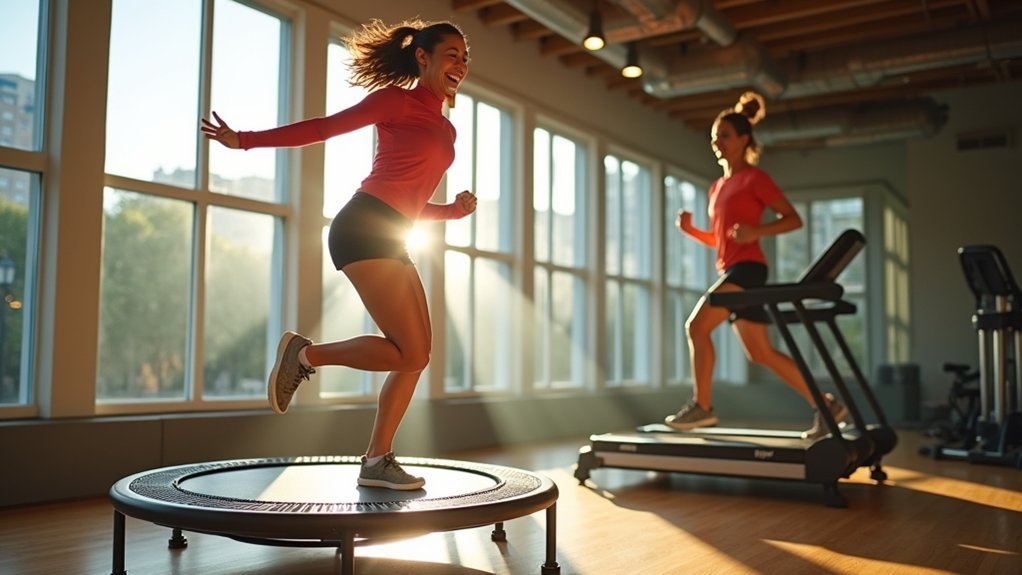
According to groundbreaking NASA research, rebounding delivers a remarkable 50% advantage in caloric expenditure compared to traditional treadmill workouts. This efficiency stems from the increased gravitational forces at the bottom of each bounce—up to three times your body weight—which dramatically elevates your metabolic rate. A quality rebounder creates enhanced G-Force that significantly contributes to your overall calorie burn.
| Activity | 30-Min Calories Burned | Key Benefits | Intensity | Impact Level |
|---|---|---|---|---|
| Rebounding | 234-260 | Enhanced oxygen uptake | Moderate | Very low |
| Treadmill | 218 | Steady-state cardio | Moderate | Moderate-high |
| High-Intensity Rebounding | 300+ | Elevated EPOC | High | Low |
| Jogging (9 km/h) | 140-180 | Forward movement | Moderate | High |
| Walking (brisk) | 130-150 | Accessibility | Low-moderate | Moderate |
You’ll also enjoy better sustained metabolic demand during rebounding sessions, with greater muscle engagement throughout your body activating both core and stabilizer muscles.
Cardiovascular Efficiency: Twice the Benefit in Half the Time
Groundbreaking research by NASA reveals that rebounding delivers astonishing cardiovascular benefits in a fraction of the time required for treadmill workouts.
Just 10 minutes on a rebounder provides superior cardiovascular gains compared to 33 minutes of running.
Achieve 3× better heart health results in just 10 minutes of rebounding versus over half an hour of running.
You’ll experience 68% more efficient oxygen uptake on a rebounder, which directly enhances your cardiovascular performance and endurance.
The springy surface absorbs shock while still providing an intense workout that traditional high-impact exercises cannot match.
Your heart rate elevates faster and reaches higher sustained levels, creating greater cardiac output with each bounce.
The unique G-force variability—reaching up to three times your body weight—strengthens your heart muscle and vascular system more effectively than steady-state treadmill running.
This improved cardiovascular efficiency means you’ll recover faster between workouts while developing better aerobic capacity and heart health in considerably less time.
Impact-Free Exercise: How Joint Protection Enables Longer Workouts
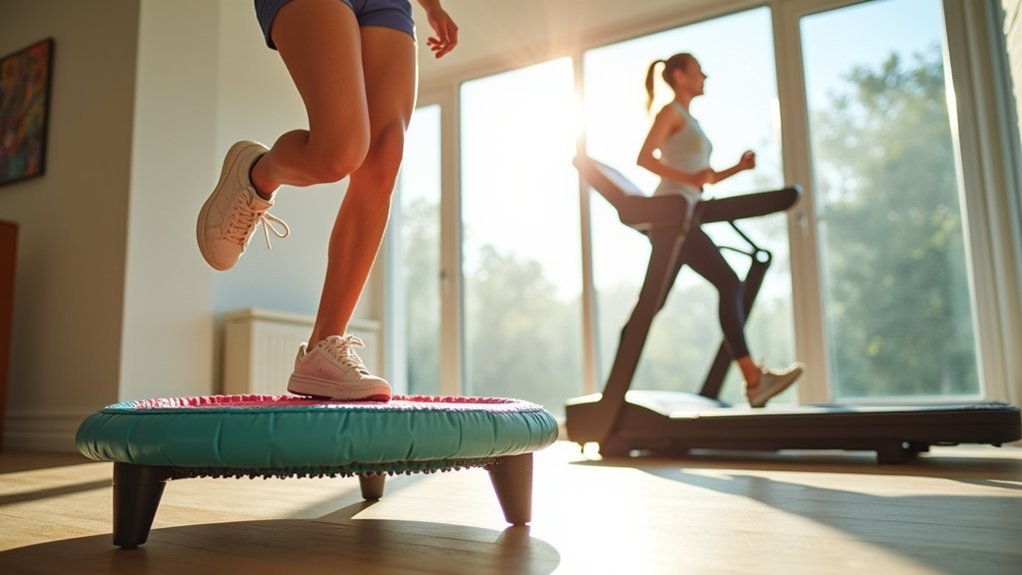
The remarkable cardiovascular benefits of rebounding come with another powerful advantage: your joints stay protected throughout your entire workout.
Unlike treadmills, where each step creates jarring impact, rebounders absorb shock through their flexible surface, considerably reducing stress on your knees, hips, and ankles.
This joint protection isn’t just about comfort—it’s a calorie-burning multiplier. You’ll exercise longer and more frequently when you’re pain-free.
The rebounder strengthens muscles around your joints while improving flexibility and range of motion, creating a reinforcing cycle of better support and mobility. Regular rebounding workouts help maintain synovial fluid lubrication which is essential for reducing friction within the joints.
With minimal injury risk, you’ll maintain consistent workout schedules instead of taking forced breaks.
Even during recovery periods, you can use your rebounder for active rest, keeping your metabolism elevated without compromising joint health.
The Enjoyment Factor: Psychological Benefits That Increase Calorie Burn
When you’re genuinely enjoying your workout, you’ll burn more calories without even realizing it. Rebounders offer a fun, bouncy experience that triggers endorphin release more effectively than the repetitive motion of treadmills.
Exercise becomes magic when it’s enjoyable—rebounding transforms fitness into bouncy bliss that keeps your brain happy and calories burning.
The playful nature of rebounding creates a positive psychological association with exercise. You’ll experience greater dopamine production, enhancing your motivation to work out longer and more intensely. This approach also reduces stress through shifting your focus away from daily problems to the enjoyable bouncing motion.
Setting achievable goals on a rebounder—like mastering new bouncing techniques—provides immediate positive feedback that treadmills often lack.
Additionally, rebounders allow for creative workout variations that prevent boredom and maintain engagement. This variety strengthens your mind-body connection while reducing stress hormones like cortisol.
When exercise feels more like play than work, you’ll naturally extend your sessions, leading to increased calorie expenditure and better long-term adherence.
Customizable Intensity: Targeting Different Energy Systems
Both rebounders and treadmills enable cardiovascular exercise, yet they differ dramatically in how they let you customize workout intensity and target specific energy systems. On a rebounder, you’ll experience dynamic G-force variability (up to 3x your body weight) that engages both aerobic and anaerobic pathways simultaneously. According to NASA research, 10 minutes jumping on a rebounder delivers more cardiovascular benefits than 33 minutes of running.
| Energy System | Rebounder Advantage | Treadmill Limitation |
|---|---|---|
| Aerobic | 68% more oxygen uptake | Primarily steady-state |
| Anaerobic | Instant intensity shifts | Manual setting changes |
| Recovery | Enhanced EPOC effect | Plateaued calorie burn |
You can rapidly adjust bounce height, speed, and movement patterns without interrupting your flow. This flexibility maximizes calorie burn through sustained elevated heart rates while preventing plateaus. Unlike treadmills’ repetitive linear motion, rebounding’s varied movements challenge your neuromuscular coordination, promoting more efficient fat oxidation and carbohydrate metabolism.
Full-Body Engagement: Maximizing Muscle Activation
Rebounding and treadmill workouts differ considerably in their ability to activate muscles throughout your body, with rebounders offering superior full-body engagement compared to treadmills’ primarily lower-body focus.
When you’re on a rebounder, each bounce engages your core, back, shoulders, and legs simultaneously—similar to how compound movements activate multiple muscle groups. The unstable surface forces your body to continuously stabilize, engaging your entire core region in ways treadmill running simply can’t match. This comprehensive engagement mirrors how deadlifts engage nearly every muscle in the body, making rebounding exceptionally efficient for total-body conditioning.
Rebounding activates your entire kinetic chain, creating full-body engagement through constant stabilization that traditional cardio simply cannot deliver.
Unlike treadmills, rebounding creates isometric activation through constant stabilization requirements. Your arms, shoulders, and upper back actively work to maintain balance, creating a natural form of resistance training.
This extensive muscle activation not only helps prevent injuries but also contributes to greater calorie burn as more muscle groups are working simultaneously.
Frequently Asked Questions
How Long Does a Rebounder Last With Regular Use?
Your rebounder can last 2-10 years with regular use. Quality models with metal springs typically endure longer than bungee types. You’ll extend its lifespan by maintaining it properly and replacing worn parts promptly.
Can Seniors Safely Use Rebounders for Effective Workouts?
Yes, you can safely use rebounders for effective workouts as a senior. They’re low-impact, improve balance, strengthen muscles, and boost cardiovascular health. Start gradually and consider professional guidance for maximum safety.
Are Mini-Trampolines and Rebounders the Same Thing?
No, they’re not the same. Your mini-trampoline uses metal springs for higher bounces and recreation, while rebounders use bungee cords for gentler, fitness-focused workouts with less impact on your joints.
What’s the Weight Limit for Most Commercial Rebounders?
Most commercial rebounders support between 225-450 pounds, with standard models typically handling around 330 pounds. Premium options can hold up to 440 pounds. You’ll find the weight capacity clearly listed in the product specifications.
Can Rebounding Help With Lymphatic Drainage and Detoxification?
Yes, rebounding considerably helps your lymphatic drainage and detoxification. The bouncing motion opens lymphatic valves, stimulates one-way fluid movement, flushes toxins, and can triple your white blood cell count, enhancing overall immune function.
In Summary
You’ll find rebounding isn’t just fun—it’s scientifically superior to treadmill workouts. With NASA-proven efficiency, greater calorie burn, and zero joint stress, you’re getting more results in less time. Your body works harder against gravity while feeling less strain. Don’t be surprised when you’re burning 50% more calories while actually enjoying your workout. Ready to bounce your way to better fitness?
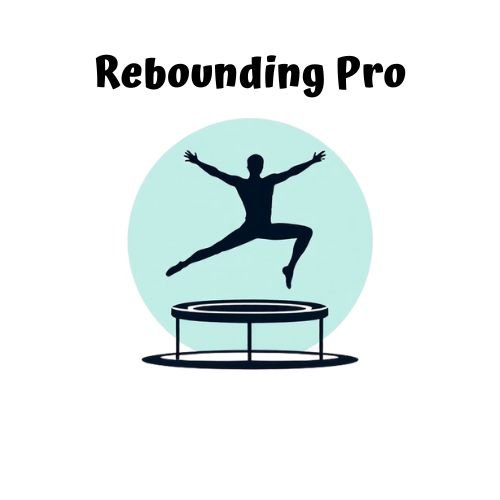
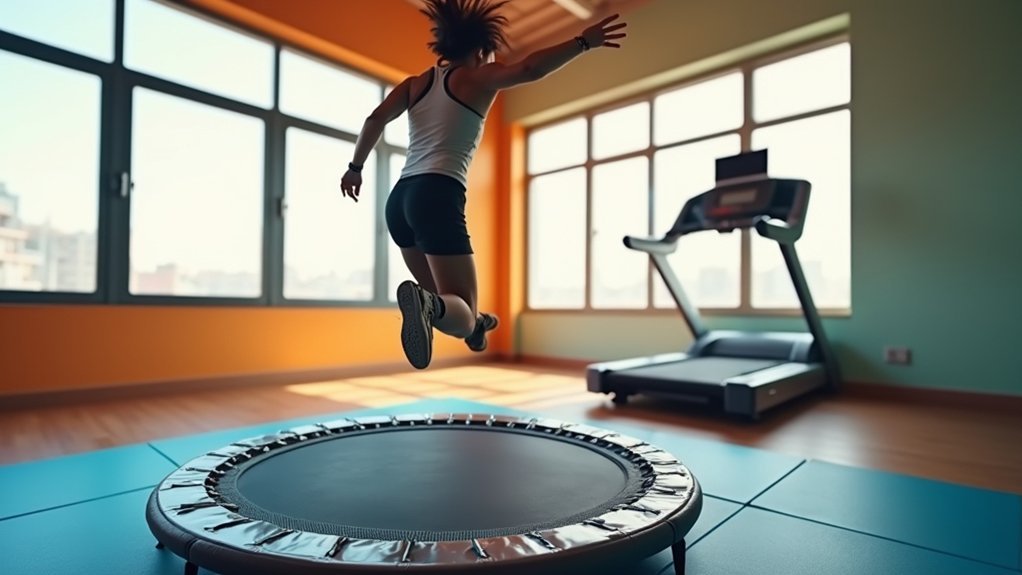


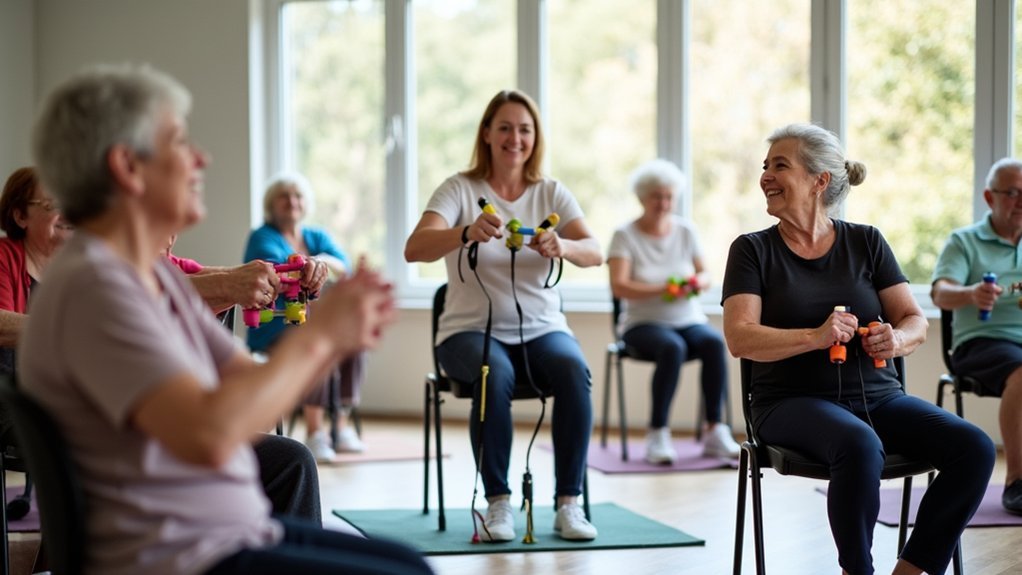
Leave a Reply